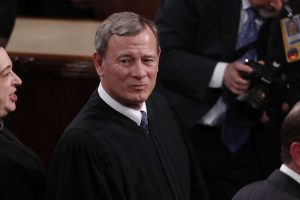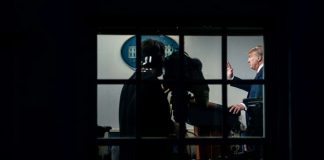NOVEMBER 12, 2020

The U.S. Supreme Court has been conspicuously quiet as President Donald Trump and his allies press ahead with lawsuits challenging the election results and citing unfounded claims of widespread fraud.
Since Friday, when one justice ordered Pennsylvania counties to segregate ballots received up to three days after Election Day, the nation’s highest court has taken no other election-related steps, even with minor issues seemingly ripe for action.
The silence stems in part from a lack of opportunity, as lawsuits brought on behalf of Trump in six battleground states remain at the lower court level and so far offer no prospect of reversing Democrat Joe Biden’s victory.
Yet it may also speak to a broader desire to steer clear from a fight that could leave an indelible stain on a court that now has three Trump appointees. The president has only heightened the stakes for the court’s legitimacy by saying he is counting on it to side with him in any election dispute.
“The court should — and I suspect will — tread very carefully when deciding whether to intervene in the election,” said Allison Orr Larsen, a constitutional law professor at William & Mary Law School. “The court has to weigh the benefits of making any modest, nuanced decision that would have little actual impact against the rather large costs of the public misconstruing the court’s decision as casting doubt on the integrity of the election.”
Trump’s Challenge to the 2020 Vote: A State-by-State Guide
Trump’s efforts to undo Biden’s victory have conjured up memories of 2000, when the Supreme Court sealed Republican George W. Bush’s victory over Democrat Al Gore by blocking a new round of Florida recounts.
Trump’s case for Supreme Court intervention is likely to be much weaker than Bush’s. The 2000 dispute involved a rare set of circumstances: a single state that would determine the winner and a margin so thin — 537 votes, according to the certified result — that the recount could have flipped the state for Gore. The decision ended 36 days of post-vote wrangling.
In contrast, Trump would have to reverse the results in at
least three states where he trails or has lost. That would probably have to include Pennsylvania, where he is behind Biden by more than 50,000 votes.
Bush Veterans
Three of the court’s current members — Chief Justice John Roberts and Trump-appointed Justices Brett Kavanaugh and Amy Coney Barrett — worked for Bush during the 2000 battle. All three also have reasons for wanting to sidestep any Trump bid to overturn Biden’s victory, says Jessica Levinson, a professor who teaches election law at Loyola Law School in Los Angeles.
Roberts has made it a priority to try to protect the court’s institutional reputation, while Barrett and Kavanaugh underwent partisan confirmation battles. Barrett, confirmed just eight days before Election Day, would almost certainly face calls to recuse from any Trump election case.
Chief Justice John Roberts worked for George W. Bush during the 2000 election.
“They all to varying degrees care about being viewed as real jurists, not political actors,” Levinson said. “And one of the best ways to try and make that happen is to try and stay out of probably the most controversial political question that you can get.”
The pending Supreme Court skirmishes stem from a Pennsylvania Supreme Court decision that extended the deadline for mail ballots to be received by three days. Acting before the election, the U.S. Supreme Court left the extension in place on a 4-4 vote, and state officials now say about 10,000 ballots arrived after the original Nov. 3 deadline.
Republicans are seeking to reverse that outcome now that Barrett is on the court. As an interim step, they asked the high court on Nov. 6 to order Pennsylvania counties to segregate the disputed ballots — something most if not all were already doing — and block those votes from being counted.
Alito Intervention
Hours later, Justice Samuel Alito, who handles emergency matters from Pennsylvania, granted the first part of that request but stopped short of barring the votes from being counted. He then referred the matter to the full nine-member court for the next steps, but the court has taken no action since then.
The Supreme Court has also deferred acting on Trump’s bid to intervene in that case and take over the two pending Republican appeals. The Pennsylvania Democratic Party says it doesn’t object to Trump’s request but says the high court should hold off dealing with it.
The court hasn’t taken any steps toward putting the appeals on a fast track. As of now, Democrats don’t even have to file a brief in response until Nov. 25, two days after Pennsylvania counties are required to certify their results.
Ultimately, if Trump keeps pressing his claims, with or without evidence, the court may be forced at least to consider whether to take up his appeal.
“I suspect that Chief Justice Roberts and most of his colleagues are hoping that events in the political realm render the matters moot,” said Michael Dorf, a professor who teaches constitutional law at Cornell Law School and is critical of Trump. “If so, the hope is likely in vain, given the apparent willingness of Trump and his enablers to destroy the American republic in order to remain in office.”
Courtesy/Source: Bloomberg










































































































